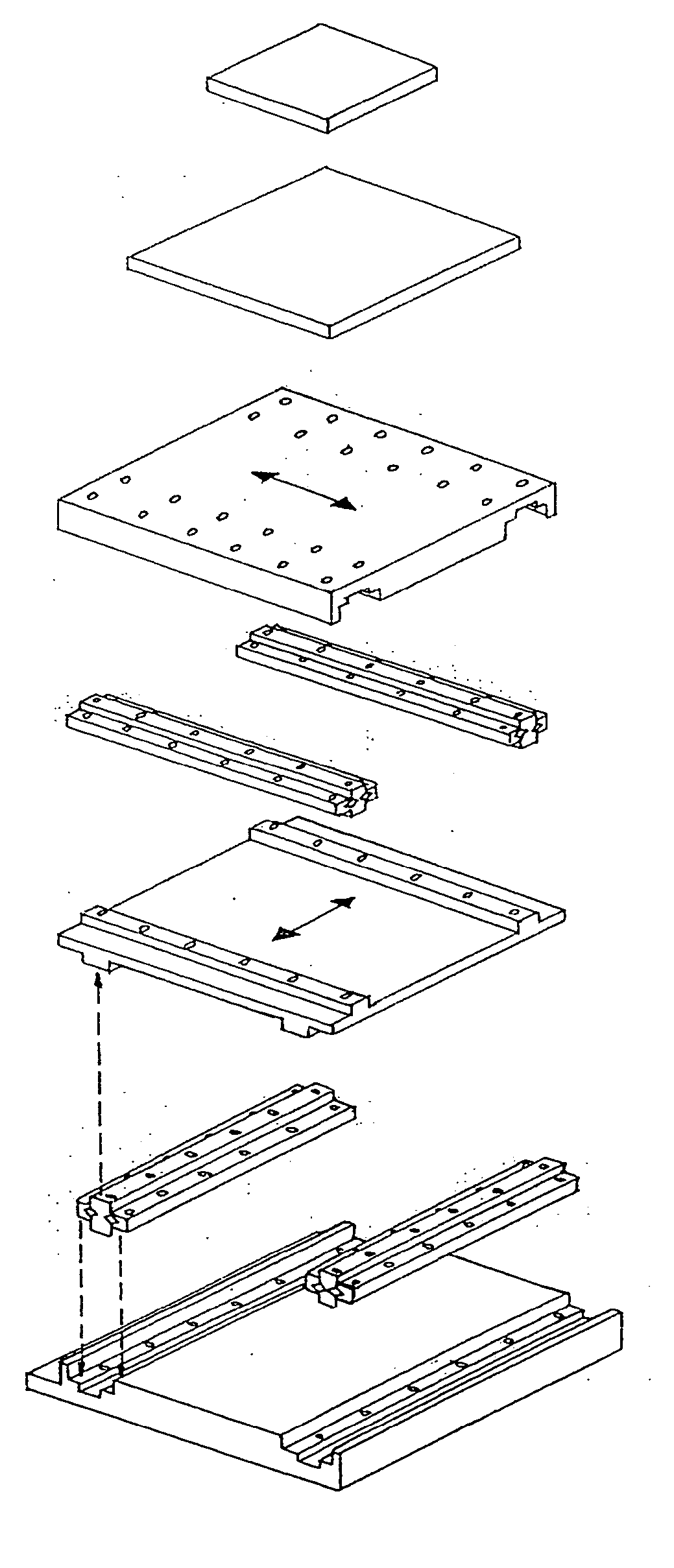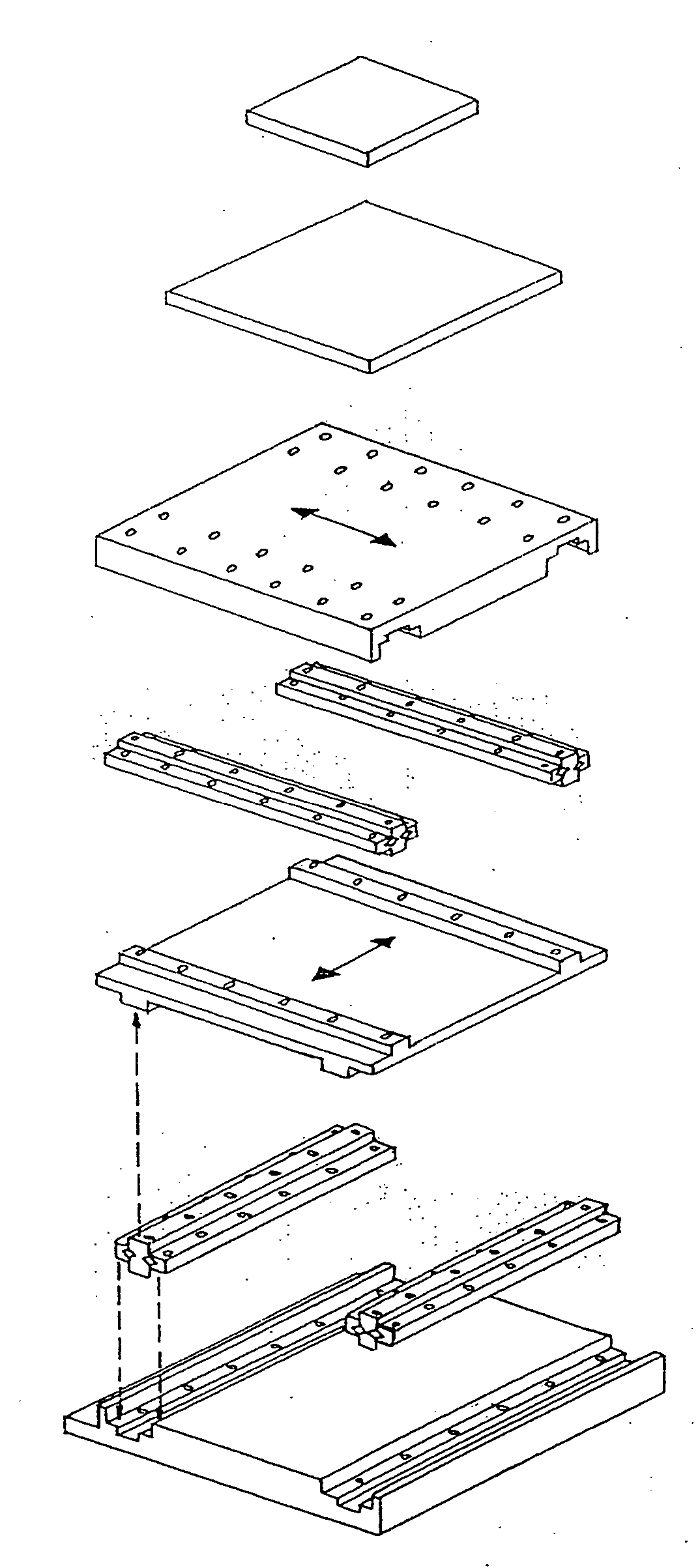Stage for a workpiece
a technology for workpieces and stages, applied in the direction of dynamo-electric machines, maintainance and safety accessories, large fixed members, etc., can solve the problems of significant differences in the thermal characteristics of steel rails, errors in the accuracy of processing workpieces, etc., and achieve the effect of improving guidance accuracy and benefiting from the stage construction
- Summary
- Abstract
- Description
- Claims
- Application Information
AI Technical Summary
Benefits of technology
Problems solved by technology
Method used
Image
Examples
Embodiment Construction
[0015] Referring now to the drawing there is shown, in exploded representation, a workpiece stage 10 for a machine tool or other form of machine, particularly a machine in which precise guidance of a workpiece in X and Y directions is required. Such a machine can be, for example, an electron beam lithography machine in which small-scale integrated circuit layouts are repeatedly written on successive substrates, such as semiconductor wafers. For the purpose of writing the circuit features, each wafer must be displaced in fine increments within very close ranges of tolerances with respect to pitch, roll and yaw so as to avoid offsets in mutually abutting pattern lines. The nature of the machine incorporating the stage and the manner in which the stage is utilised in the machine do not concern the invention as such. However, the stage construction is directed to, inter alia, minimising differential thermal expansion of adjoining stage components and the stage is thus particularly benef...
PUM
 Login to View More
Login to View More Abstract
Description
Claims
Application Information
 Login to View More
Login to View More - R&D
- Intellectual Property
- Life Sciences
- Materials
- Tech Scout
- Unparalleled Data Quality
- Higher Quality Content
- 60% Fewer Hallucinations
Browse by: Latest US Patents, China's latest patents, Technical Efficacy Thesaurus, Application Domain, Technology Topic, Popular Technical Reports.
© 2025 PatSnap. All rights reserved.Legal|Privacy policy|Modern Slavery Act Transparency Statement|Sitemap|About US| Contact US: help@patsnap.com


